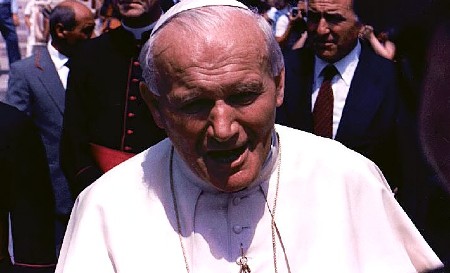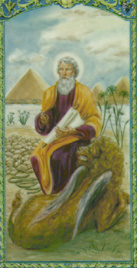Klemens Maria Brentano
FREE Catholic Classes
A German poet, one of the most prominent members of the Romantic School. He was born at Thal-Ehrenbreitstein 8 September, 1778; d. 28 July, 1842. After a futile attempt to become a merchant, he entered the University of Jena in 1797, where he remained with occasional interruptions until 1803. Here he made the acquaintance of the brothers August Wilhelm and Friedrich Schlegel and of Ludwig Tieck, the founders and leaders of the Romantic School, to which Brentano also attached himself. In 1803 he married Sophie Mereau, the divorced wife of Professor Mereau, and the following year moved to Heidelberg, where with Achim von Arnim, who later became his brother-in-law, and Joseph Görres he was soon the leading spirit of the so-called younger Romantic School. It was during this period that he published jointly with Arnim the famous collection of old folksongs known as "Des Knaben Wunderhorn", which appeared in three volumes between the years 1805 and 1808. This collection established once for all the position of the Volkslied in German literature and had a powerful effect on the lyric poetry not only of Germany, but also of other nations. Longfellow testifies that it had "the most wild and magic influence" on his imagination. It was of course not be expected that the text of these poems should be philologically accurate, but this is no way diminishes the importance of the service which the editors rendered to German literature. In 1806 Brentano's wife died and he then led a wild, unsettled life, drifting to various places, Halle, Weimer, Kassel, Vienna, and Berlin. A second matrimonial venture proved disastrous; his wife was a woman of unbridled temper and habits, and he soon separated from her. Finally he drifted to Berlin restless and discontented. There he met the accomplished Luise Hensel, who later on achieved fame as a poetess. His ardent love for her was unrequited. Luise Hensel declined all offers of marriage. A great change now came over the poet. His previous indifference to the Catholic Faith, in which he had been born, was changed to the most fervid devotion. He left Berlin and in 1818 went to the secluded Westphalian town of Dulmen, attracted by the fame of the stigmatic nun, Katharina Emmerich . For six years he remained near her, making a record of her visions and revelations. The publication of this record occupied the greater part of the remaining years of his life. After her death in 1824 he again wandered, settling at last in 1833 in Munich, where with Görres he was the centre of a circle of distinguished Catholic scholars and men of letters. He died in 1842 while visiting his brother Christian in Aschaffenburg.
Brentano is chiefly known as the editor of "Des Knaben Wunderhorn", but he also has written a great deal of original matter. Among his earlier writings "Godwi" deserves notice, as a wild, formless romance in which some fine lyrics are interspersed, including he song of the "Lore Lay", later incorporated in the "Wunderhorn". This song inspired Heine's famous ballad on the same subject. "Die Romanzen vom Rosenkranz" (Romances of the Rosary) is an unfinished narrative allegorical poem containing a fanciful mixture of biographical, historical, and legendary traits, which was published in 1852 after the author's death. Especially noteworthy are the stories, or Märchen , such as the "Geschichte vom braven Kasperl und dem schonen Annerl" (1817), a tragic story of village life; and "Gockel, Hinkel und Gackeleia" (1838). A fantastic, whimsical humour pervades nearly all of Brentano's work; his style is marred by frequent and disagreeable eccentricities. When he wishes to be naïve, he often becomes merely childish. His poetic gifts, however, are undeniably of a high order; some of his lyric poems (e.g. "Lied der Spinnerin", "An eine Kranke") are among the best of their kind. But he lacked self-control and dissipated his great literary talents. His collected writings, edited by his brother Christian, appeared at Frankfort in nine volumes (1851-55).









 Daily Readings for Thursday, April 25, 2024
Daily Readings for Thursday, April 25, 2024 St. Mark: Saint of the Day for Thursday, April 25, 2024
St. Mark: Saint of the Day for Thursday, April 25, 2024 Prayer for Policemen: Prayer of the Day for Thursday, April 25, 2024
Prayer for Policemen: Prayer of the Day for Thursday, April 25, 2024
